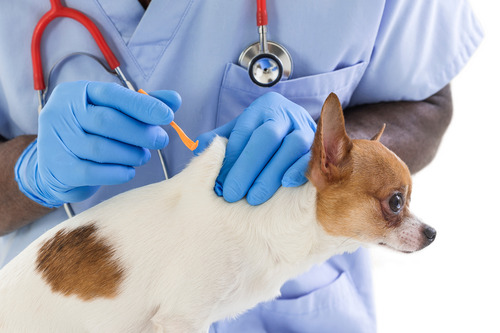Finding ticks on your dog can be a worrying experience. When ticks embed fully into your dog’s skin, they’re not just a nuisance; they become a health risk. In this blog, we’re going to cover everything you need to know about fully embedded ticks on dogs. Our aim is to arm you with the knowledge you need to protect your furry companion. If you’re concerned about ticks on your dog, Broomfield Veterinary Hospital is here to help. Call us at (303) 466-1764 or book an appointment online for professional advice and treatment.
What Are Fully Embedded Ticks?
Ticks are parasitic creatures that attach to the skin of mammals to feed on their blood. A tick becomes fully embedded when it burrows its head under the skin of its host, leaving only its body visible. This can make them particularly difficult to spot and remove.
Understanding the Risk
Fully embedded ticks pose several health risks to dogs, including the transmission of diseases such as Lyme disease and Rocky Mountain spotted fever. It’s crucial to detect and remove ticks as soon as possible to minimize these risks.
Signs of Embedded Ticks
Spotting a fully embedded tick on your dog can be challenging. However, there are signs you can look out for:
- Unexplained Bumps: Feel for unexplained bumps on your dog’s skin, especially in areas where ticks are commonly found, such as the head, neck, ears, and feet.
- Irritation and Scratching: If your dog is paying particular attention to a specific area of their body or is scratching more than usual, it could be a sign of an embedded tick.
- Redness or Inflammation: Look for areas of skin that are red or inflamed, which may indicate a tick has attached itself.
How to Check Your Dog for Ticks
Regular checks are essential, especially during tick season. Here’s how to do a thorough check:
- Use Your Hands: Run your hands over your dog’s body, feeling for bumps or swelling.
- Check Hard-to-Reach Areas: Pay special attention to hidden areas such as between the toes, under the armpits, and around the ears and neck.
- Visual Inspection: In addition to feeling for ticks, you should also visually inspect your dog’s fur, especially if they have a thick or dark coat.
What to Do If You Find a Tick
If you find a tick on your dog, it’s important not to try removing it yourself, as improper removal can lead to infection or disease transmission. Immediately get in touch with Broomfield Veterinary Hospital at (303) 466-1764. We can safely remove the tick and provide any necessary treatment. After a tick has been found and removed, keep an eye on your dog for signs of illness, such as lethargy, fever, or unusual behavior, and report these to your vet.
Preventing Tick Infestations
Prevention is always better than cure. Here are some strategies to prevent ticks from attaching to your dog:
- Speak to us about the best tick prevention products for your dog.
- Make checking for ticks part of your daily routine, especially after walks in areas known for ticks.
- Ticks thrive in tall grasses and brush. Keeping your yard trimmed can help reduce tick populations.
When to Call the Vet
If you suspect your dog has an embedded tick or if you’ve removed a tick and are concerned about your dog’s health, it’s time to call the vet. If a tick is deeply embedded, notice symptoms such as fever, lethargy, or uncharacteristic behavior after a tick bite, it’s best to let a professional handle it. If you’re unsure about anything related to ticks and your dog, we’re here to help. At Broomfield Veterinary Hospital, we understand how concerning it can be to find ticks on your dog. Our team is equipped to provide the care and advice needed to keep your pet healthy and tick-free. For concerns about fully embedded ticks on dogs or to learn more about prevention, call us at (303) 466-1764 or book an appointment online.





